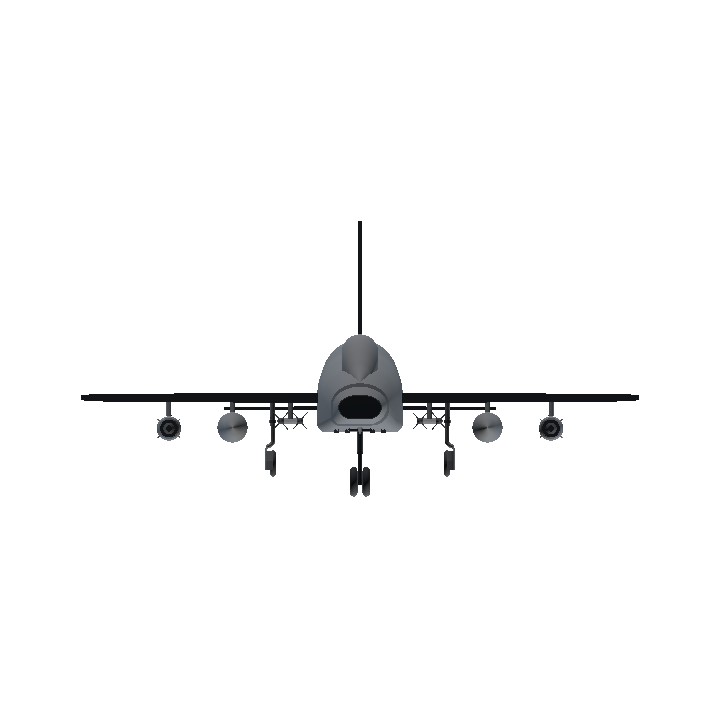SAY HELLO TO YOUR NEW COMRADE!
F-100 Super Sabre: A Detailed Overview
The F-100 Super Sabre was a groundbreaking fighter aircraft developed by North American Aviation for the U.S. Air Force. It was the first aircraft to break the sound barrier in level flight and became one of the most important jet fighters of the Cold War era. Its development marked a major leap in military aviation, setting the stage for future high-performance fighter aircraft.
Development and Design
The F-100 was part of the "Century Series" of U.S. fighter jets, which included a number of significant fighters designed during the 1950s and 1960s. The aircraft was developed in response to a U.S. Air Force requirement for a fighter capable of intercepting Soviet bombers at high speeds. The design began in the early 1950s under the designation XF-100, with the first prototype taking flight on May 25, 1953. The aircraft was an evolution of earlier designs, including the F-86 Sabre, but with significant improvements aimed at supersonic speeds.
Key design features of the F-100 included:
- A straight wing, which, while not ideal for sustained supersonic flight, offered excellent performance at lower speeds and in combat situations. The straight-wing design was also easier and cheaper to manufacture.
- A powerful Pratt & Whitney J57 turbojet engine, capable of pushing the aircraft to speeds over Mach 1 (1,200 mph or 1,930 km/h).
- The aircraft's low-mounted wings provided excellent control at high speeds, and the fuselage was designed for maximum aerodynamic efficiency.
Though the aircraft was intended to be an all-weather fighter-bomber, its role evolved significantly over time as newer models and upgrades allowed it to perform additional roles, including ground attack and close air support.
Variants
The F-100 Super Sabre saw a number of different variants, each improving upon the last with better performance, enhanced avionics, and increased capabilities.
F-100A (1954):
The initial production model of the Super Sabre, the F-100A was primarily designed as a fighter-interceptor. It was powered by the J57-P-21 engine and was capable of speeds up to Mach 1.38. This version was primarily used for air superiority and interception missions but had limitations in terms of avionics and weapons delivery systems.F-100C (1956):
The F-100C was an improved version of the F-100A, featuring stronger landing gear, larger wings, and a more powerful engine. It was equipped with air-to-ground weaponry and nuclear capability for tactical missions, allowing it to carry nuclear bombs for the first time in the F-100 series. This version became the backbone of U.S. Air Force fighter-bomber units during the late 1950s and early 1960s.F-100D (1959):
The F-100D was the most produced and widely used variant, with over 1,000 units built. This version was optimized for ground attack and close air support missions. It featured advanced avionics, an improved radar system, and a fire control radar to improve bombing accuracy. The F-100D could carry a wide array of bombs, rockets, and missiles, making it versatile for a variety of missions. It also featured a second seat for a weapons systems officer to assist in targeting and weapon control. The F-100D played a key role during the Vietnam War, where it was used for both interdiction missions and close support for ground troops.F-100F (1961):
The F-100F was the two-seat trainer variant of the F-100, designed for training pilots in the fighter-bomber role and to provide additional flexibility in combat missions. The F-100F could also perform ground attack missions and was used in the tactical bombing role, carrying the same weapon payload as the F-100D.
Operational History
The F-100 Super Sabre had a notable and varied service history, particularly in the Cold War and Vietnam War.
Cold War and Initial Deployment (1950s–1960s)
The F-100 was originally developed to intercept Soviet bombers during the early years of the Cold War. By the time it entered service, it was quickly recognized as a fast, powerful jet capable of high-speed intercepts, making it well-suited for its intended role. The aircraft was used by the U.S. Air Force to defend against potential bomber attacks by the Soviet Union, especially during the tense years of the Cuban Missile Crisis and other Cold War standoffs. It was also deployed with NATO forces in Europe as part of the effort to deter Soviet aggression.Vietnam War (1965–1973)
The F-100's role shifted dramatically during the Vietnam War. Initially, the aircraft's high speed and interceptor capabilities were of limited use in the dense jungle environment of Vietnam. As a result, the F-100 was adapted for ground attack and close air support (CAS) missions. The F-100D became the most commonly used variant in Vietnam, where it conducted bombing raids, airstrikes, and ground support for U.S. troops and allies.The F-100's ability to carry a diverse array of munitions, including napalm, high-explosive bombs, and rockets, made it an invaluable asset during the war. The aircraft's high-speed dive bombing technique allowed pilots to attack targets with greater precision, although the relatively low maneuverability of the F-100 compared to later aircraft (such as the F-4 Phantom) posed challenges in more fluid air combat.
Retirement and Legacy (1970s)
The F-100 Super Sabre began to be phased out in the early 1970s, as newer and more advanced aircraft, such as the F-4 Phantom II and F-111, replaced it in frontline service. The aircraft remained in service with the Air National Guard and in various support roles through the mid-1970s, with the final combat sorties flown in 1979.
Performance and Specifications
- Top Speed: The F-100 could reach speeds of Mach 1.38 (around 950 mph, or 1,530 km/h) at altitude, making it one of the fastest aircraft of its era.
- Range: It had a combat range of around 1,100 miles (1,770 km) with external fuel tanks, allowing it to cover significant distances during tactical operations.
- Service Ceiling: The Super Sabre had a maximum service ceiling of about 50,000 feet (15,240 meters).
- Armament: The F-100 could be equipped with a variety of air-to-air missiles, air-to-ground rockets, nuclear bombs, and conventional bombs. Its primary armament in the early years was four 20mm Colt Mk 12 cannons. Later models had better bomb delivery and targeting systems, allowing for more precise attacks.
Legacy and Influence
While the F-100 Super Sabre was eventually eclipsed by more advanced fighters like the F-4 Phantom II, F-111, and F-15 Eagle, its legacy was significant in the development of the U.S. Air Force's fighter-bomber capabilities. The aircraft was the first true supersonic fighter used by the U.S. and demonstrated the potential of jet-powered aircraft in high-speed, high-altitude combat.
In addition, the F-100 played a key role in the transition from fighter-interceptor aircraft to multirole fighters capable of performing a variety of missions, from air superiority to close air support. The Super Sabre's contribution to tactical air power and interdiction missions laid the groundwork for future U.S. aircraft, including the F-4 Phantom and the F-16 Fighting Falcon, which would inherit many of its design features and operational roles.
The F-100 is remembered as one of the most iconic aircraft of the 1950s and 1960s, a symbol of the Cold War's high-speed, high-stakes military aviation, and a critical tool in U.S. and NATO forces' airpower strategy. Despite its relatively brief frontline service, its legacy has endured in the capabilities it helped establish and the pilots who flew it.
Specifications
Spotlights
- SuperSuperTheSylph one year ago
- RyooSensei one year ago
- ACEOFFICERS one year ago
- LunarEclipseSP one year ago
- Karroc9522 one year ago
- HudDistance one year ago
- ComradeBazookaBall one year ago
General Characteristics
- Created On Android
- Wingspan 37.3ft (11.4m)
- Length 48.5ft (14.8m)
- Height 18.4ft (5.6m)
- Empty Weight 15,498lbs (7,029kg)
- Loaded Weight 35,187lbs (15,960kg)
Performance
- Power/Weight Ratio 2.155
- Wing Loading 77.5lbs/ft2 (378.3kg/m2)
- Wing Area 454.1ft2 (42.2m2)
- Drag Points 4127
Parts
- Number of Parts 81
- Control Surfaces 7
- Performance Cost 457







LET ME INTRODUCE MYSELF :>
Noice
@PhantomBoltSP dude, this is really good nice work
this is so well made gjj :))
this is your first plane and its already too good?